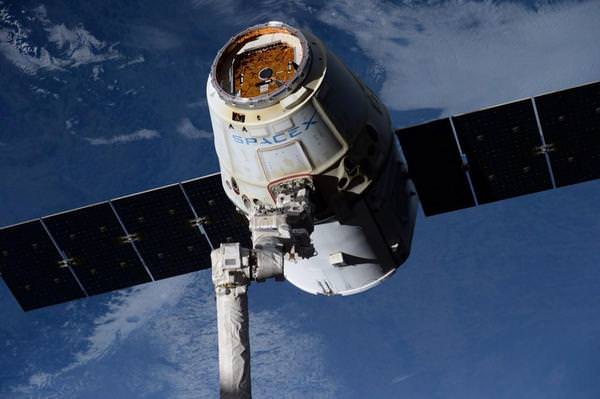Concluding a busy five week mission, the SpaceX Dragon CRS-4 commercial cargo ship departed the International Space Station (ISS) this morning, Oct. 25, after delivering a slew of some 2.5 tons of ground breaking science experiments and critical supplies that also inaugurated a new era in Earth science at the massive orbiting outpost following installation of the ISS-RapidScat payload.
Dragon was released from the snares of the station’s robotic arm at 9: 57 a.m. EDT while soaring some 250 mi (400 km) over the northwest coast of Australia.
It returned safely to Earth with a splashdown in the Pacific Ocean some six hours later, capping the fourth of SpaceX’s twelve contracted station resupply missions for NASA through 2016.
“The Dragon is free!” exclaimed NASA commentator Rob Navias during a live broadcast on NASA TV following the ungrappling this morning. “The release was very clean.”
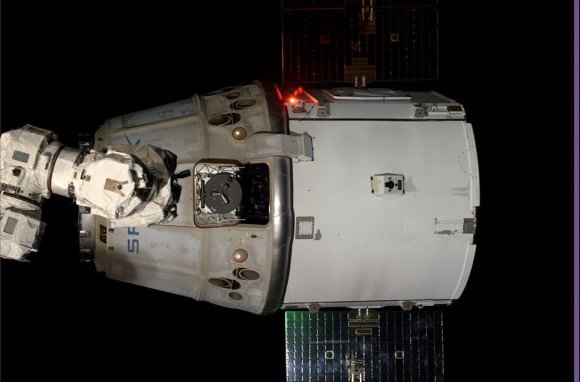
The private resupply ship was loaded for return to Earth with more than 3,276 pounds of NASA cargo and science samples from the station crew’s investigations on “human research, biology and biotechnology studies, physical science investigations, and education activities sponsored by NASA and the Center for the Advancement of Science in Space, the nonprofit organization responsible for managing research aboard the U.S. national laboratory portion of the space station,” said NASA.
The release set up a quick series of three burns by the ship’s Draco thrusters designed to carry Dragon safely away from the station.
NASA astronauts Reid Wiseman and Butch Wilmore quickly retracted the arm working from their robotics workstation in the domed Cupola module.
“Thanks for the help down there,” the astronauts radioed. “It was a great day.”
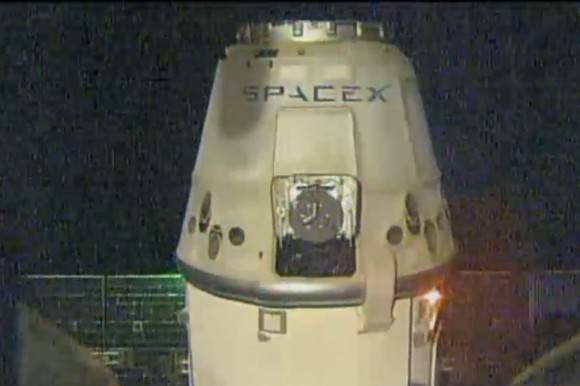
The first burn took place a minute later at about 9:58 a.m. EDT and the second at about 10:00 a.m. A yaw maneuver at 10:05 a.m. set up the orientation required for the third burn at about 10:08 a.m.
Dragon moved away quickly during the nighttime release and was already outside the Keep Out Sphere (KOS), an imaginary bubble surrounding the station at a distance of 200 m. It disappeared quickly in the dark and was barely visible within minutes.
“The propulsion systems are in good shape,” said Navias. “All systems on Dragon are functioning perfectly.”
With Dragon safely gone following the trio of burns, the next major event was the deorbit burn at 2:43 p.m. EDT at a distance of about 90 statute miles from the station.
Dragon slipped out of orbit. After surviving the scorching heat of reentry through the Earth’s atmosphere, the ship sequentially deployed its drogue chutes and three main parachutes at about 3:30 p.m.
Splashdown in the Pacific Ocean occurred as expected at about 3:39 p.m., approximately 265 miles west of the Baja peninsula.
Dragon is the only vehicle that can return intact from the ISS with a substantial load of cargo and is carrying critical science samples for distribution to researchers.
Today’s Dragon departure starts a week of heavy traffic of comings and goings to the ISS involving a series of US and Russian unmanned cargo ships.
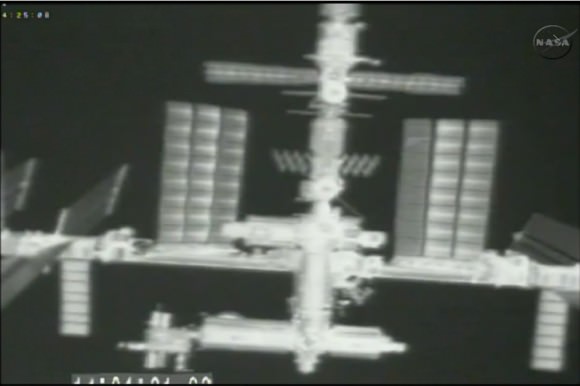
The Orbital Sciences Antares rocket with the commercial Cygnus cargo freighter is set to launch on Monday, Oct. 27, from NASA Wallops, VA. It will dock at the ISS on Nov. 2 at the Earth-facing port on the Harmony module just vacated by Dragon.
Russia’s Progress 56 unmanned cargo ship will also undock on Oct. 27. And Progress 57 will launch from Baikonur on Wednesday, Oct 29.
The SpaceX Dragon CRS-4 cargo resupply mission thundered to space on the company’s Falcon 9 rocket from Space Launch Complex-40 at Cape Canaveral Air Force Station in Florida on Sept. 21.
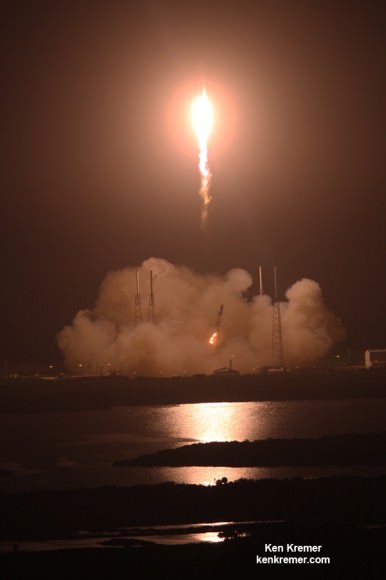
Dragon was successfully berthed at the Harmony module on Sept. 23, 2014.
Among the nearly 5000 pounds of cargo hauled up by Dragon was as an Earth observation platform named ISS-RapidScat loaded in the unpressurized trunk section.
Also loaded aboard were a slew of science experiments, spare parts, crew provisions, food, clothing and supplies to the six person crews living and working aboard the ISS soaring in low Earth orbit under NASA’s Commercial Resupply Services (CRS) contract.
It also carried the first 3-D printer to space for the first such space based studies ever attempted by the astronaut crews. The printer will remain at the station for at least the next two years.
20 mice housed in a special rodent habitat were also aboard, as well as fruit flies.
The ISS Rapid Scatterometer, or ISS-RapidScat, is NASA’s first research payload aimed at conducting near global Earth science from the station’s exterior and will be augmented with others in coming years.
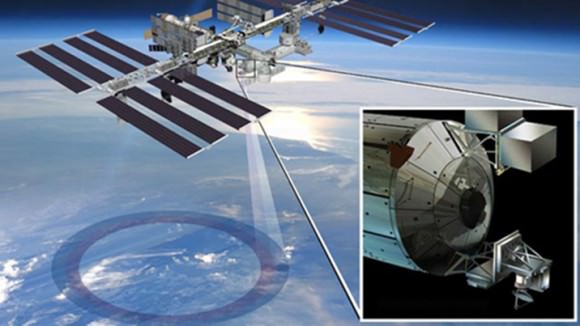
The successful installation and activation of the ISS-RapidScat science instrument on the exterior of Europe’s Columbus module in late September and early October inaugurated a new era in space station science.
RapidScat is designed to monitor ocean winds for climate research, weather predictions, and hurricane monitoring.
The 1280 pound (580 kilogram) experimental instrument is already collecting its first science data following its recent power-on and activation at the station.
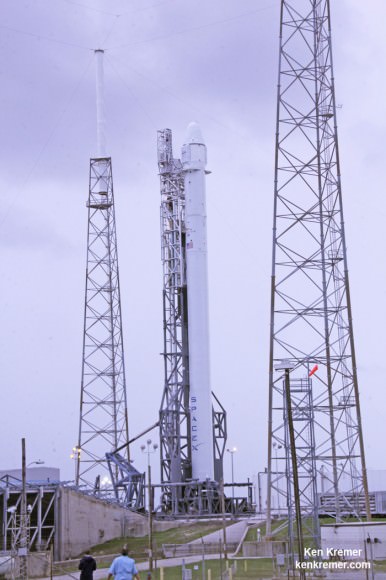
“This mission enabled research critical to achieving NASA’s goal of long-duration human spaceflight in deep space,” said Sam Scimemi, director of the International Space Station division at NASA Headquarters.
“The delivery of the ISS RapidScatterometer advances our understanding of Earth science, and the 3-D printer will enable a critical technology demonstration. Investigations in the returned cargo could aid in the development of more efficient solar cells and semiconductor-based electronics, the development of plants better suited for space, and improvements in sustainable agriculture.”
The next SpacX cargo Dragon on the CRS-5 mission is slated for launch no earlier then Dec. 9.
Stay tuned here for Ken’s continuing Earth and Planetary science and human spaceflight news.
…………….
Learn more about Commercial Space, Orion and NASA Human and Robotic Spaceflight at Ken’s upcoming presentations:
Oct 26/27: “Antares/Cygnus ISS Rocket Launch from Virginia”; Rodeway Inn, Chincoteague, VA

